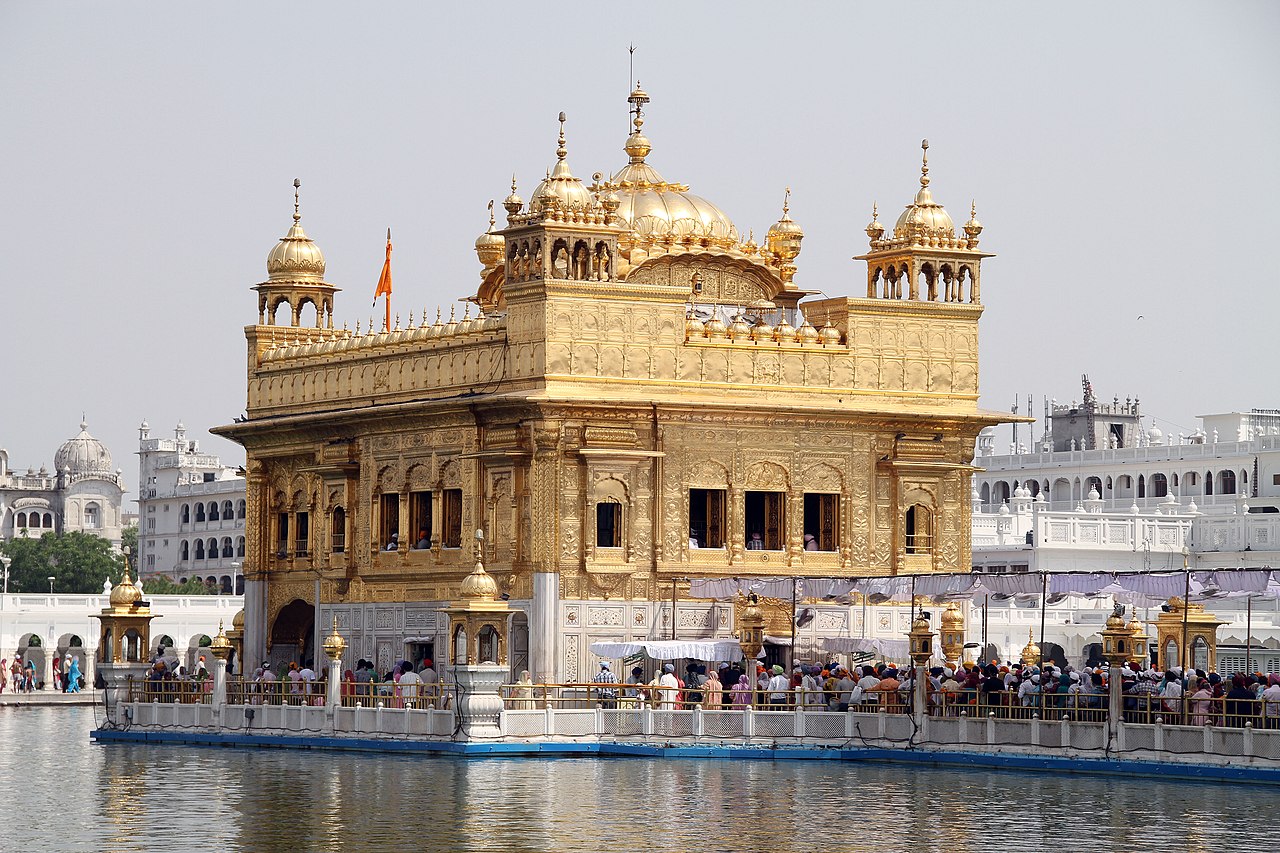The Golden Temple, or Harmandir Sahib, located in Amritsar, Punjab, India, stands as one of the most sacred and revered sites in Sikhism. It serves as the spiritual and cultural center of Sikhism, attracting millions of pilgrims and visitors from around the world each year. With its stunning architecture, serene surroundings, and profound spirituality, the Golden Temple holds a special place in the hearts of Sikhs and non-Sikhs alike.
Construction of the Golden Temple began in the 16th century under the direction of Guru Arjan Dev, the fifth Sikh Guru, who envisioned a central place of worship for the Sikh community. Built on a small island in the center of a sacred pool known as the Amrit Sarovar, the Golden Temple is a stunning architectural masterpiece that blends elements of Islamic, Hindu, and Sikh design.
The most striking feature of the Golden Temple is its shimmering golden exterior, which gives the temple its name. The entire upper portion of the temple is covered in intricately carved gold leaf, which glitters and reflects in the sunlight, creating a mesmerizing spectacle that draws visitors from far and wide.
The architecture of the Golden Temple is a testament to Sikh values of humility, equality, and inclusivity. The temple is accessible from all four sides, symbolizing the idea that people of all backgrounds and walks of life are welcome to worship together in the presence of the divine. The main entrance, known as the Darshani Deori, leads to a causeway that crosses the Amrit Sarovar and leads to the sanctum sanctorum, where the Guru Granth Sahib, the Sikh holy scripture, is enshrined.
Surrounding the Golden Temple complex is a marble pathway known as the Parikrama, which encircles the sanctum sanctorum and offers pilgrims a chance to circumambulate the temple in a gesture of reverence and devotion. Along the Parikrama are several other important buildings and structures, including the Akal Takht, the highest temporal seat of authority in Sikhism, and the Guru Ram Das Langar, one of the largest free kitchens in the world, where volunteers serve meals to thousands of visitors each day regardless of their religion, caste, or creed.
The Golden Temple is not only a place of worship but also a symbol of Sikh identity, resilience, and unity. Throughout its history, the temple has faced numerous challenges and hardships, including attacks and desecrations by foreign invaders, but it has always emerged stronger and more resilient than ever. The temple serves as a beacon of hope and inspiration for Sikhs around the world, reminding them of the values of compassion, service, and equality that lie at the heart of their faith.
One of the most powerful aspects of the Golden Temple is its atmosphere of peace, harmony, and spirituality. Visitors to the temple often describe a sense of profound calm and serenity that washes over them as they enter the sacred precincts of the temple complex. Whether sitting by the side of the Amrit Sarovar, listening to the soothing sounds of the kirtan (devotional music) that fills the air, or partaking in the langar (community meal) with fellow pilgrims, visitors to the Golden Temple are enveloped in a sense of divine grace and presence.
In conclusion, the Golden Temple in Amritsar is not just a place of worship but a symbol of Sikhism’s rich spiritual heritage, cultural identity, and universal values of peace, compassion, and equality. With its stunning architecture, inclusive ethos, and profound spirituality, the Golden Temple continues to inspire and uplift millions of people from all walks of life, serving as a beacon of hope and enlightenment in an often turbulent world.



